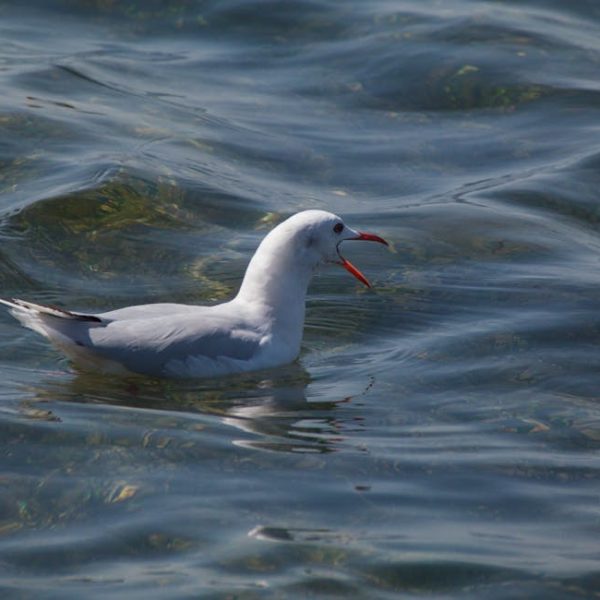From lounging around in sunny corners to the adorable pursuit of the infamous red laser dot, cats display an intriguing blend of indolence and agility. Most captivating, however, is their exhibition of innate hunting skills when an unsuspecting bird lands within the perimeter of their pouncing reach. But, how exactly do our domesticated companions manage to seize these winged creatures?
This stealthy art form has its roots deeply anchored in the past, born of species survival necessities and honed over hundreds of generations. By understanding the nature of your cat’s predatory behavior and skills, you can forge a stronger bond with your furry friend and ensure they can lead a satisfying life that strikes a balance between their wild roots and domestic comfort.
The Evolutionary Background of Feline Hunting Skills
Cats’ natural hunting capabilities have evolved since their wild ancestors roamed the earth. Domestication has done little to dull these instincts. On the contrary, cats have beautifully adapted to this new lifestyle while retaining their ancestral prowess.
- Retractable claws provide the duality of maintaining sharpness for hunting and preventing claw-related injuries during play or grooming.
- Ear structure fitted with 30 different muscles allows fine-tuning their hearing to the slightest rustle of a potential prey.
- Superior night vision, a result of a unique layer of cells in their eyes, gives cats the upper edge when hunting in low light conditions.
- Lightning-fast reflexes make cats efficient hunters, able to react and respond to their prey’s movements instantaneously.
Pro Tip: Recognizing these inherent traits in domesticated cats allows pet owners to appreciate their actions and embrace their needs more efficiently.
The Intricate Process of Feline Hunting
The journey from spotting a bird to the triumphant pounce is a multi-step process. A cat’s hunting sequence includes spotting, stalking, chasing, and finally, catching their prey. Each step pushes the boundaries of their physical prowess and strategic thought.
An anatomy of a successful hunt:
1. The Spotting: Cats utilize their keen sense of sight and hearing to discover potential prey.
2. The Stalk: They stealthily approach the bird, minimizing noise and visibility.
3. The Chase: Quick bursts of speed enable the chase when the bird attempts to flee.
4. The Catch: Finally, the leap and the swift swipe of a claw.
Best Practice: Providing playful alternatives that mimic a hunt, like toys or interactive games, can keep indoor cats engaged and tap into their hunting instincts positively.
Remember, a cat isn’t just a pet. It is a miniature, agile predator that shares your living room, a remnant of its wild past carrying the legacy of its ancestors, and a constant reminder of the exciting paradox of domestication. In the next segment of the article, we will explore more about the role of stealthiness in cat hunting and how cats use their cunning tactics to outsmart their avian prey.
The Role of Stealthiness in Cat Hunting
Stealth is the cornerstone of a cat’s hunting approach, enabling our furry friends to close in on unsuspecting birds. Like a dancer moving across a stage, cats blend grace, precision, and timing, transitioning from a peaceful purr to a determined predator without missing a beat.
Let’s compare cats with other predators to showcase their unique hunting tactics:
| Animals | Approach | Pros | Cons |
|---|---|---|---|
| Cats | Stealth exploits | Low noise; Surprise attack | Requires patience; Mistakes can alert prey |
| Hawks | Aerial dive-bombs | Speed; Superior vantage point | Limited to open areas; Less effective in dense vegetation |
| Wolves | Pack hunting | Numbers; Strategy | Requires coordination; Prey can escape if pack is divided |
Here’s a quick checklist to identify the signs of a stealthy hunting mode in your cat:
- Ears rotate or stand erect to catch any sound.
- Tail movement ceases, avoiding unnecessary attention.
- The body position lowers to the ground, mimicking a focused predator.
- Eyes dilate to take in as much detail as possible.
Cats and Birds: A Predator-Prey Relationship
The predator-prey dynamic between cats and birds is a thrilling combination of small-scale drama and primal instincts. Cats, with their ability to silently stalk and quickly pounce, are natural bird hunters. However, they face obstacles like flight and high nests that require specialized strategies:
- Bird stalking techniques: Slow motioned approach, blending into their surroundings, and absolute silence.
- Climbing trees: Using their retractable claws in tree hunting to reach nests.
- Patience and Timing: Waiting for the right moment to strike is often as important as the strike itself.
Pro Tip: Understanding this relationship can help create a secure environment for pet birds if you share your home with a cat. High cages, closed windows, separating rooms are all effective techniques.
Implications and Management of Feline Hunting Behavior
While it’s essential to understand and appreciate the hunting prowess of our feline friends, it’s equally important to note its impact on local wildlife. Birds, especially fledglings and small breeds, are affected by urban and suburban cat populations.
Mitigating techniques include:
- Using bell collars to alert potential prey.
- Keeping cats indoors during early mornings and evenings,
when bird activity is typically high.
- Neutering cats to control the growth of uncontrolled feline populations.
Best Practice: Encouraging play that mimics the hunting routine can help dissipate this instinct. Interactive toys, puzzle feeders, and cat trees are good options that offer physical and mental stimulation.
Whatever your stance on your domestic cat’s hunting habits, understanding these behaviors creates a better relationship between you and your pet. With the right balance of playtime, security, and understanding, you can ensure a happy and fulfilled life for your feathered and furry friends.
Key Takeaway:
- Cats’ hunting skills are a result of evolutionary adaptations, including retractable claws, fine-tuned hearing, superior night vision, and swift reflexes.
- Cats’ hunting process involves spotting, stalking, chasing, and catching their prey, each step requiring physical prowess and strategic thought.
- Stealth plays a critical role in cat hunting, allowing them to close in on birds undetected. Body signals like ear rotation, tail stillness, lower body position, and dilated eyes indicate a cat in hunting mode.
- Cats and birds have a distinct predator-prey relationship, with cats using strategic techniques to overcome barriers like flight and high nests.
- Whilst acknowledging and understanding cats’ hunting prowess, it’s crucial to manage this behavior to protect local wildlife. Bell collars for cats, restricting outdoor access in peak bird times, neutering, and providing in-house stimulation are effective mitigation techniques.
Remember, our feline companions carry a wild past within them; understanding and nurturing these instincts helps to form a strong bond with them, making them feel understood and blissful.
FAQs
Q: How can I prevent my cat from hunting birds without compromising their natural instincts?
A: You can provide your cat with in-house stimulation such as toys, puzzle feeders, or cat trees to keep them engaged. Limiting their outdoor access during peak bird activities can also deter them from hunting.
Q: What physical features aid cats in their hunting prowess?
A: Cats have retractable claws, keen hearing, superior night vision, and swift reflexes, all of which aid in their excellent hunting prowess.
Q: Are there any specific techniques cats use in hunting birds?
A: Slow stalking, blending with their surroundings, climbing trees to reach nests, and the mastery of patience and timing are the key strategies cats use when hunting birds.
Q: Do all cats possess the same level of hunting skills?
A: While all cats inherit hunting skills from their wild ancestors, the level of these skills may vary, depending on factors like their upbringing, age, and health.
Q: How can I tell if my cat is in “hunting mode”?
A: Look for signs like rotating or erect ears, ceased tail movement, a lowered body position close to the ground, and dilated eyes – these typically indicate a cat is in a hunting mode.
Feel free to share this post with others, and explore more articles on our website to better understand and care for your feline companions!












